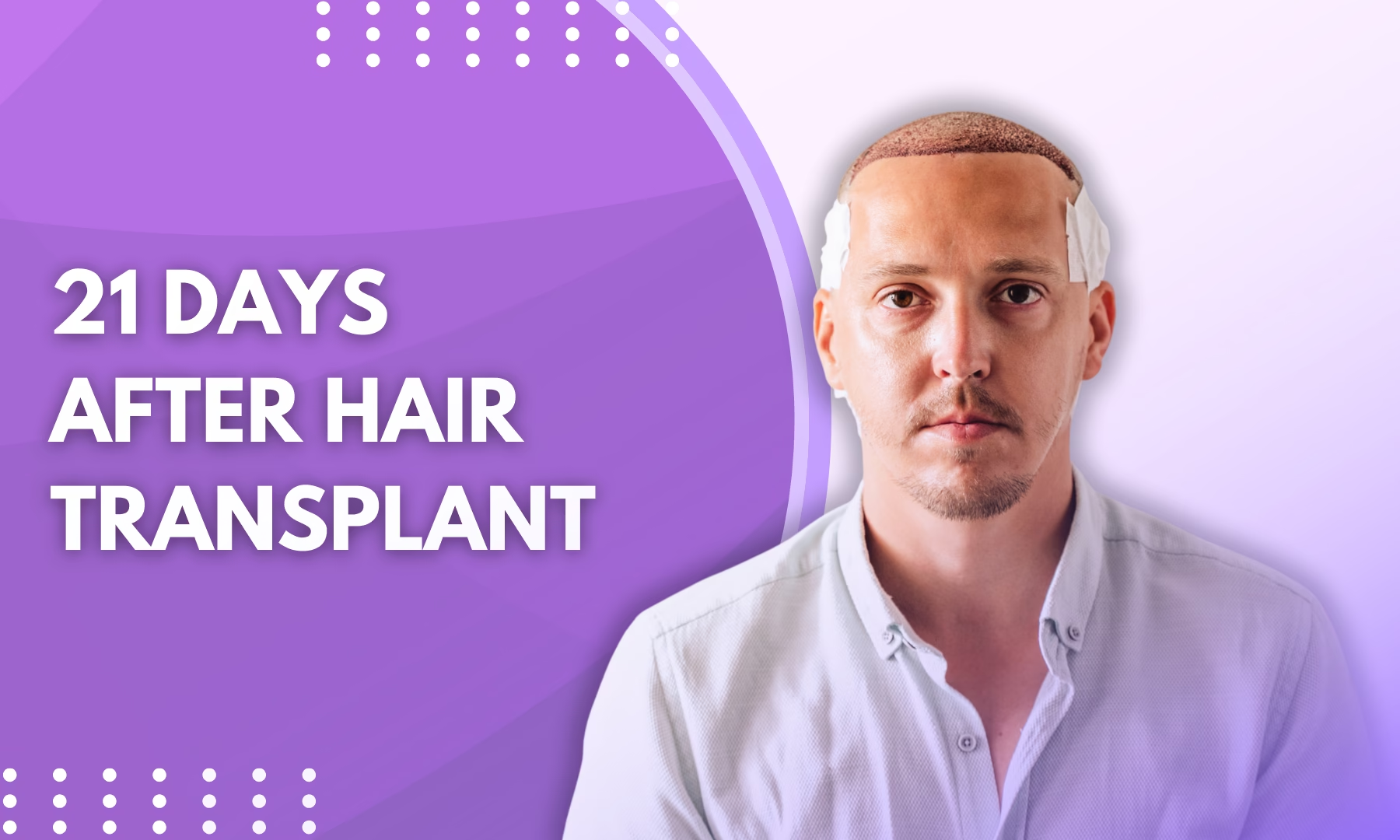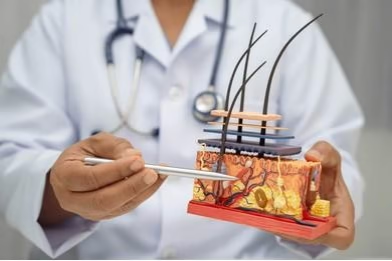
Okay, so you’re 21 days into your hair transplant recovery, how’s it going so far? You might be feeling some excitement (and maybe even a little anxiety) as you await your final results. Choosing an experienced hair transplant surgeon plays a key role in ensuring that your journey is safe and successful.
If you’re wondering what’s going on with your scalp at this stage and what to expect next, you’re in the right place. Here’s the lowdown on what happens 21 days after your hair transplant in Mumbai and how to keep things on track.
Scalp Condition and Healing Progress at Day 21

Alright, first things first: your scalp is healing, but it’s still a process. By 21 days after the hair transplant, you’re not completely out of the woods, but you’ve come a long way. What’s happening with your scalp at this point?
- Redness & Scabbing: Mild redness or scabbing around the transplanted follicles is totally normal. It might still be there at this stage, but don’t stress—it’s part of the healing process. You should notice it fading soon enough.
- Healing Continues: Your hair follicles are now securely in place, and the healing journey is well on its way. It’s normal to feel some tenderness when you touch the area, but this should ease as time passes.
- Itching: Feeling itchy? That’s just your body’s way of healing. It’s a sign that everything is working as it should. Just don’t scratch—resist the urge, because it can disrupt the healing process.
The key here? Patience. The biggest part of your recovery is taking place right now, even if you can’t fully see it yet. Things are moving in the right direction.
Hair Shedding and Growth Expectations After 21 Days
Now, let’s talk about something a lot of people worry about—shedding. At 21 days after a hair transplant, it’s totally normal to see some of the transplanted hair fall out. This might freak you out at first, but here’s the thing: it’s actually a really good sign.
What’s Really Going On?
- Shedding Phase: Yep, this is the time when you might notice some of your newly transplanted hair falling out. But don’t panic. This “shock loss” is actually a part of the natural hair cycle. The follicles are entering a resting phase before new growth begins. Trust the process—this is totally normal.
- New Growth: Don’t expect a full head of hair just yet. While the shedding happens, new hair will start emerging around the 3-4 month mark. It might be soft and fine at first, but over time, it will thicken and grow fuller.
- Full Results: Let’s be real—full results can take anywhere from 6 months to a year. But that’s the exciting part! You’ll get to see the transformation unfold as the months go by. The wait will be worth it.
You might not see a ton of visible progress at 21 days after your hair transplant, but don’t get discouraged. The foundation is being laid for your future hair.
Dos and Don’ts
Now, you’re probably wondering what you should and shouldn’t do to keep your recovery on track. Here’s the breakdown—these dos and don’ts will help ensure the best results:
Dos:
- Follow Your Surgeon’s Advice: This is the most important one. Whether it’s about your medication or how you wash your hair, stick to the instructions from your cosmetic surgeon. They know what’s best for you.
- Be Gentle With Your Scalp: When washing your hair, go easy. Use a mild shampoo, avoid scrubbing too hard, and make sure the water isn’t too hot. Your scalp is still healing—gentle care is key.
- Protect Your Scalp from the Sun: If you’re going outside, cover your scalp with a loose hat. The last thing you want is sunburn on your sensitive, healing scalp.
- Drink Plenty of Water: Staying hydrated isn’t just good for your body—it helps your scalp heal, too. It also supports hair growth, so drink up!
Don’ts:
- Don’t Scratch or Pick at Scabs: It’s tempting, but scratching or picking at scabs can dislodge the grafts and mess with your healing process. Trust me—just let your body do its thing.
- Avoid Strenuous Exercise: Sweating a lot can irritate your scalp and slow down healing, so take it easy with the workouts for the first few weeks.
- Don’t Expose Your Scalp to Heat: Hot showers or saunas? Not right now. Keep things cool to avoid irritating your scalp.
- Don’t Sleep on Your Side or Stomach: Try to sleep with your head elevated for a while to reduce swelling and avoid putting pressure on the transplanted area.
Following these tips is a simple way to make sure your hair transplant continues to go smoothly and you’re on track for the best results.
Post-Op Care
Post-op care plays a huge role in how well your hair transplant turns out. Taking care of your scalp properly ensures that the grafts stay in place and heal correctly. Here’s what you need to focus on:
- Medications: If your plastic surgeon in Mumbai has prescribed antibiotics or anti-inflammatory medication, make sure you stick to the schedule. These meds help with healing and reduce any swelling or discomfort.
- Scalp Care: When you wash your hair, be as gentle as possible. Don’t rub or scrub—just let the water and shampoo do the work.
- Sleep Smart: Sleeping with your head elevated for the first few weeks helps reduce swelling and keeps the pressure off your scalp. This little change makes a big difference!
- Avoid Smoking and Alcohol: Both smoking and drinking can slow down healing, so it’s best to avoid them, especially in the first few weeks after the transplant.
Conclusion
At 21 days after your hair transplant, you’re seeing the beginning stages of a transformation, even if the results aren’t fully visible yet. Hair shedding might freak you out, but it’s completely normal and part of the healing process. By sticking to your cosmetic surgeon’s instructions, staying patient, and practicing good scalp care, you’ll be well on your way to achieving your hair restoration goals.
Remember, it’s not just about what you can see right now—it’s about the foundation you’re building for the future. Your hair will grow stronger and fuller, and you’ll be amazed at the results over the next few months.
Frequently Asked Questions
Q1: How long does it take for hair to grow after a transplant?
Q2: Is the recovery process painful after a hair transplant?
Q3: When can I resume normal activities after a hair transplant?
Q4: How do I know if my hair transplant was successful?
Q5: What should I do if I experience unusual swelling or pain?
Disclaimer: The information shared in this content is for educational purposes only and not for promotional use.


